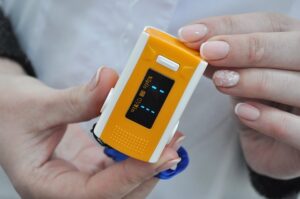
ON INTERNATIONAL ANTI-CORRUPTION DAY, FIGHTING ECONOMIC EVIL
With new standards in the works, ISO joins the fight. [CONSUMERS, MANAGEMENT SYSTEMS, BUSINESS & ANTI-BRIBERY] Corruption threatens national security, economic growth, human rights, jobs,
ISO 13485:2016 – MEDICAL DEVICES is an international standard for Quality Management Systems (QMS).
ISO 13485:2016 is the most frequently used international standard for quality management in the medical device industry. The ISO 13485:2016 standard, published by the International Organization for Standardization (ISO), is an effective way to achieve the entire requirements for a Quality Management System in the medical device business.
A medical device is a device, such as an equipment, machine, implant, or in vitro reagent that is used to diagnose, prevent, or cure diseases or other medical conditions. Organizations involved in the design, production, installation, and servicing of medical devices and related services should utilize ISO 13485:2016. Internal and external stakeholders, such as certification bodies, might use it to assist them with their auditing processes. ISO 13485:2016 was created to address the most up-to-date quality management system techniques, such as technological advancements and regulatory needs and expectations. The new edition emphasizes risk management and risk-based decision-making, as well as changes relating to rising regulatory requirements for supply-chain businesses.
The goal of this quality management standard is to assist medical device manufacturers and service providers in meeting both customer and regulatory expectations. According to ISO 13485 2016, any medical equipment producer or service provider can meet these goals by establishing a quality management system (QMS) and attempting to continuously enhance the system’s appropriateness, sufficiency, and effectiveness.
The ISO 13485:2016 standard is based on ISO 9001:2008. Both standards are organised similarly and employ a similar numbering system. Furthermore, many of the ISO 13485:2016 criteria are directly derived from ISO 9001 without any changes. Some ISO 9001 standards were changed, while others were removed. ISO 13485:2016 also covers a comprehensive set of criteria that are unique to medical devices. The ISO 13485:2016 standard emphasises a process-based approach to quality management inside a company. A review of the sequence, inputs and outputs, and connection of processes is part of the process approach. A process is any action that takes in inputs and creates outputs. Organizations that take a process-oriented approach to quality control are more likely to:
Medical devices are more important than other products and services in terms of ensuring the greatest possible quality in their manufacture, distribution, usage, and maintenance. In the majority of industries, product quality flaws can lead to widespread recalls, significant financial losses, and a loss of brand equity. Medical device quality flaws can result in class action lawsuits, physical injury to patients, and even death. As a result, the importance of creating and executing a quality system that is compliant with ISO13485:2016 cannot be overstated. In addition to the numerous additional benefits of adopting the ISO13485:2016 standard, many firms have already seen significant cost savings in the Cost of Quality (COQ). The following are some of the potential advantages:
The ISO 13485 standard is widely regarded as the gold standard for quality management systems used by medical device manufacturers. Many firms that have been certified under the standard have improved product quality, reliability, and regulatory compliance, as well as being in line with industry best practises.
The six steps involved in ISO 13485:2016 Certification which are as follows:
Certification begins with the creation of a quality plan to meet the standard’s requirements. Plan how your quality system will operate, as well as the responsibilities that will be necessary and who will fulfill them.
Determine where you want to sell your medical devices and make sure you’re in compliance with local medical device legislation.
Design controls must be in place from the start of the product development process and should be documented as soon as practicable.
Train your employees to update the QMS and keep it compliant with ISO 13485 using a consistent and uniform system.
CAPA together with Design Controls, is one of your QMS’s key procedures. Make sure your CAPA protocols are well-defined and workable.
Notified Bodies are organisations tasked with auditing medical device businesses for ISO 13485 compliance. Certification audits are undertaken in two stages, with the certification issued after the second stage.
ISO 13485 accreditation is required for any organisation participating in the medical device supply chain. This is especially true for people who create, develop, manufacture, and distribute such items. In certain nations, even municipal regulations compel firms to obtain accreditation. ISO standards apply to every organisation that deals with medical devices, regardless of its size or nature. In order to assure the safety of its products, an organisation must be able to demonstrate conformity with ISO 13485:2016. In many circumstances, certification is merely one of the legal requirements that a corporation must meet, and without ISO 13485:2016, a firm cannot legally trade medical products.
Obtaining ISO compliance necessitates a substantial investment of time and resources. Organizations who are willing to make that commitment will gain the benefits of ISO 13485:2016 certification and compliance. An organisation can obtain a positive reputation in the global marketplace as well as significant financial benefits from increased product quality and customer satisfaction if the correct policies, processes, and documentation are in place.

With new standards in the works, ISO joins the fight. [CONSUMERS, MANAGEMENT SYSTEMS, BUSINESS & ANTI-BRIBERY] Corruption threatens national security, economic growth, human rights, jobs,

ISO standards are offering much-needed solutions as cloud computing revolutionizes the way we socialize and work. [ECONOMY, INNOVATION, COVID-19 & HEALTH] The cloud serves as

New eye-protection guidelines have just been released. [MEDICAL, SAFETY & SPORT] Our eyes are our window to the world and one of our most developed

Organizations must have procedures in place to guarantee they stay up with the regulatory landscape, which is always evolving. Compliance with laws and regulations, on

Regulatory burdens are reduced while product safety and performance are improved. [MEDICAL & BUSINESS] Medical gadgets, ranging from bandages to MRI machines, contribute to save

ISO IS AT THE CENTRE OF A WORLDWIDE EFFORT TO REHABILITATE OUR PLANET. ISO 14000 FAMILY This year’s World Environment Day theme is “Reviving and

ALL INTERNATIONAL STANDARD ACCREDIATION FORUM
